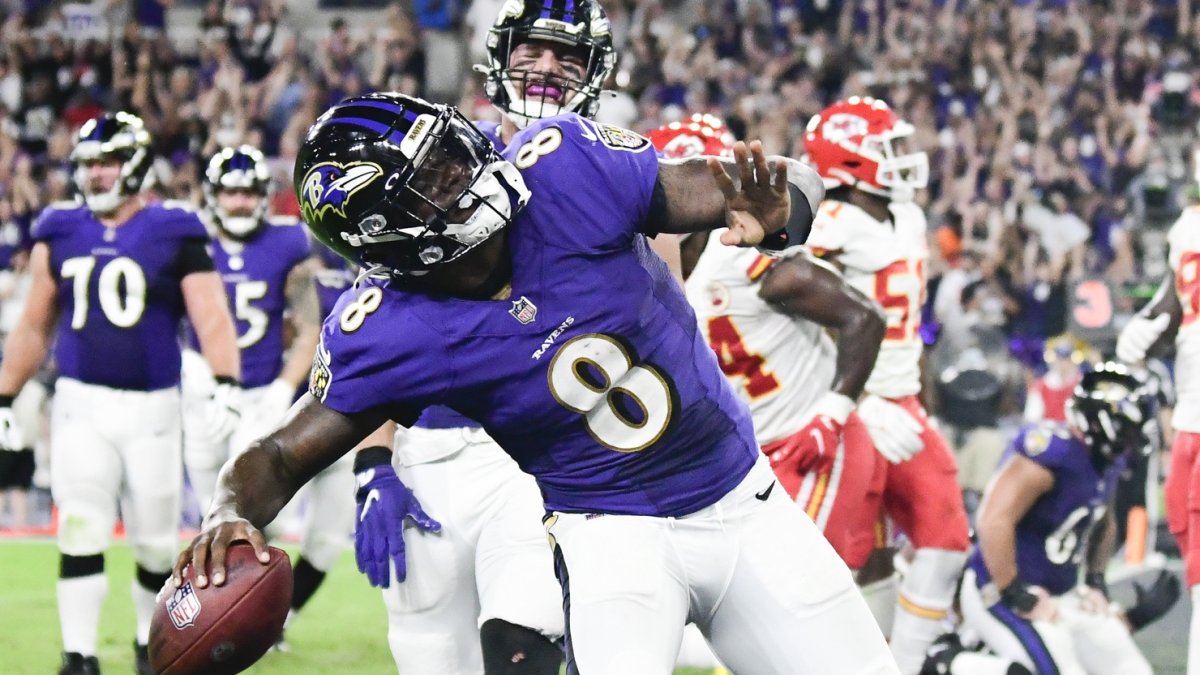Conventionally, we expect NFL quarterbacks to fit into a particular box — especially so when a game is on the line. Pointing out potential pressure, checking out of plays and putting on their best Peyton Manning impression.
Watching Lamar Jackson play quarterback is the ultimate unlearning process. Aside from his ability to work through a passing progression (a “plus” skill of his since he was at Louisville), you won't see much of his game being used in Jeff Tedford’s quarterback clinics.
Click here for more PFF tools:
Rankings & Projections | WR/CB Matchup Chart | NFL & NCAA Betting Dashboards | NFL Player Props tool | NFL & NCAA Power Rankings
Jackson is a wrist-thrower, which gives him flexibility on arm angles on passes at the cost of peak velocity. He holds the ball, averaging times to throw above three seconds in each of his three seasons coming into 2021. He can be too risk-averse at times, throwing the third-fewest interceptions and making the fourth-fewest turnover-worthy plays (min. 1000 dropbacks) since being drafted. That comes at the cost of what PFF charts as “big-time throws,” where he ranks in the bottom five.
| Fourth Quarter | Dropbacks | Passing Yards | TD:INT | Passer Rating | Avg. Depth of Target |
| Lamar Jackson, since 2018 | 229 | 1,498 | 15:2 | 110.1 | 9.0 |
What he is able to do is what no one this side of prime Cam Newton could in the modern era, what viewers witnessed on Sunday Night against Kansas City — walking his offense down the field as the hammer in the run game.
| Fourth Quarter | Rushes | Yds Per Carry | Explosive Run % | % of Yards After Contact | % of Runs for 1st Down or TD |
| Lamar Jackson, since 2018 | 149 | 3.7 | 12% | 57% | 28% |
Using his legs late in games isn’t a new facet in the Ravens' offense, but Baltimore hasn’t leaned this hard into his rushing ability late in games since he was a rookie. Offensive coordinator Greg Roman has typically opted for using Jackson’s legs early in games to force defenses to play man or blitz, setting up the play-action and dropback passing game. This is an assumption, of course, but it seems as though the injuries at running back and rookie wideout Rashod Bateman’s absence has driven this team to lean on the only reliable piece it has to move the ball.
| Lamar Jackson Rush Attempts by Quarter | 1st Quarter | 2nd Quarter | 3rd Quarter | 4th Quarter |
| 2018 – 2020 | 129 | 103 | 114 | 132 |
| Week 1 & 2, 2021 | 5 | 3 | 3 | 17 |
When the injury luck stabilizes again, the Ravens will probably look to be more balanced in their approach. But until then, it’s only right to pay respect to a rare occurrence — a game-winning, 14-play drive that had the same number of completions as flips from a superstar quarterback.
In order to understand what Roman, Jackson and the Ravens accomplished, there has to be an understanding of the way Kansas City has matched up with Jackson in the past. In that, it becomes clear how Baltimore exploited Chiefs defensive coordinator Steve Spagnuolo to get beneficial looks.
Attacking the Edge Through the Safety Shell
The NFL’s history with the zone read — and the blanket term “read option” — is well documented now, but some of the finer details can be missed, mostly because things aren’t viewed through a defensive lens.
What the option does in the spread is just what a fullback does in a heavier offense — creating extra gaps for defensive players to account for in the run fit. There is a myriad of ways to go about defending the option, but all fall into two structural categories based on whether a team plays with the middle of the field open (MOFO) or closed (MOFC).
Exclusive content for premium subscribers

WANT TO KEEP READING?
Dominate Fantasy Football & Betting with AI-Powered Data & Tools Trusted By All 32 Teams
Already have a subscription? Log in



 © 2025 PFF - all rights reserved.
© 2025 PFF - all rights reserved.